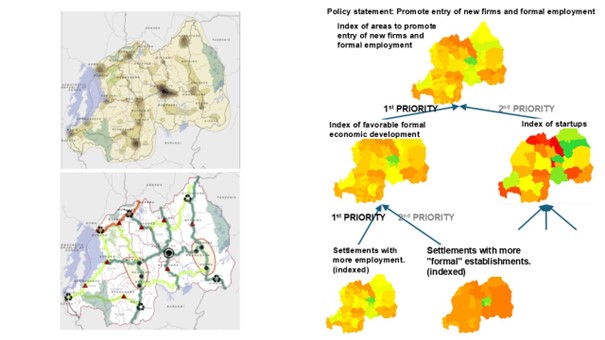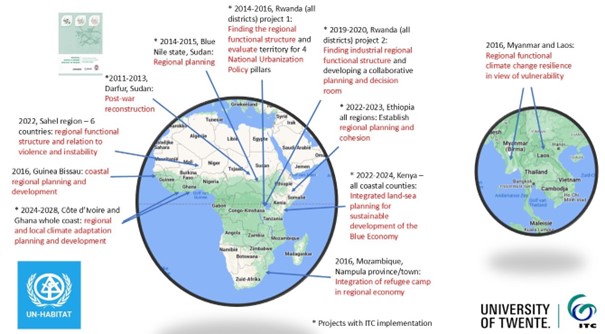Planning Support Systems
The EquiCity Game: Promoting fair decision-making in urban planning
6 min
We don't understand why a particular Planning Support System (PSS) is seemingly successful.
We don't understand because the literature shows that many, if not most, do not institutionalise. Even though many of them are powerful instruments to help people prepare development scenarios, participate in planning processes, or evaluate and account for resources used, it is not easy to get planning tools used in planning practice.
If we better understand the institutionalisation of PSS, we can better strategise for their development and use.
The PSS, named 'the Spatial Development Framework (SDF) methodology', was developed by UN-Habitat with support from the Faculty of Geo-information Science and Earth Observation (ITC) of the University of Twente.
The SDF methodology delivers spatial tools to prepare spatial development alternatives and spatially evaluate whether investment projects contribute to policy objectives (Fig 1). It was developed for countries with little regional planning experience or capacity and was first applied for regional reconstruction planning in the Darfur region of Sudan.
Later, it appeared to be adaptable to many other contexts. Since its conception in 2011, it has been used in many countries (Fig 2) in UN-Habitat projects that provide technical support to these countries.

Figure 1. The SDF methodology comprises spatial methods such as the matrix of functions (results on the left) and spatial multi-criteria evaluation (results on the right), which deliver an evidence-based understanding of the functional centrality of settlements and the interdependencies between settlements (left) and current spatial policy performance (right).

Figure 2. Locations, i.e. international regions, nations, and regions within countries, where the Spatial Development Framework methodology has been applied between 2011 and 2024.
PhD candidate Debbie Oyeku has published the first of a series of papers, together with co-authors Dr Luc Boerboom, Dr Mafalda Madureira and Prof. Dr Karin Pfeffer of ITC, in which they investigate the institutionalization of the SDF methodology.
This open-access paper answers the question, 'How can drift influence PSS implementation and use?'. The concept of 'drift' refers to changes in new technology, user behaviour, and/or existing practice during ICT implementation.
Oyeku et al. studied the adoption of the SDF methodology in Rwanda's planning practice. They focussed on how to observe that frictions between practice and technology are resolved. They use 'drift' to explain how PSS users (GIS specialists, planners) initiate unplanned changes during use and implementation and to make necessary adaptations for practice.
The researchers use the Technology Acceptance Model (TAM) (fig. 3) to show what initiates unplanned changes in PSS implementation and how drift explains the actual use of the SDF methodology and embeddedness in the spatial planning practice.
Based on Fig. 3, they developed a conceptual framework of codes to code both primary data from interviews with early adopters and trained potential users, as well as secondary data in the form of documents.

Figure 3. ‘Drift’ positioned in the Technology Acceptance Model.
The study reveals different use intentions amongst government agencies and subsequent adaptation of the actual use. Also, it points to bottlenecks that need to be addressed to change the actual use of the SDF methodology.
This study thus confirms the role of drift as a useful approach to describe processes of institutionalization of PSS use and the kind of embeddedness of the SDF methodology in Rwanda's spatial planning process.
More importantly, understanding drift helps us strategize for the institutionalisation of Planning Support Systems in planning practice. It does so in a way that goes beyond those explanations commonly given for the success of technologies, such as a champion or financial resources. The next papers will seek a deeper understanding with other methods.